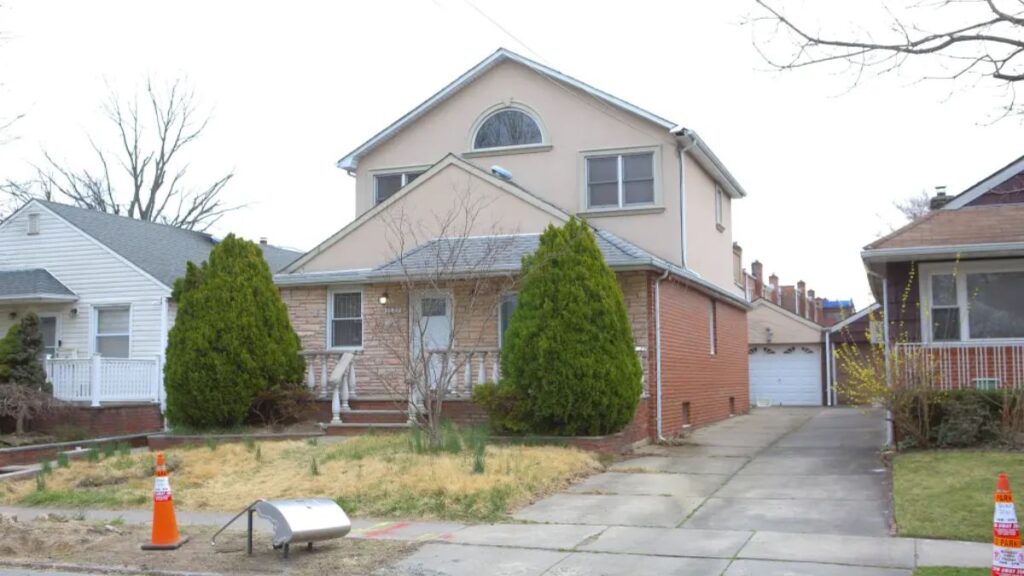Range Rover Squatter Case in NYC Raises Alarming Questions About Urban Security
A recent incident in New York City has left residents stunned and homeowners more alert than ever. A woman discovered her stolen Range Rover parked just outside her home — but the real shock came when the alleged squatter inside refused to leave.
The story didn’t just end there. What followed was a frustrating delay in police response, a viral video that ignited social media, and growing public concern about how safe our homes and neighborhoods really are.
This isn’t just another bizarre crime story. It’s a loud warning about a rising threat in urban environments — where vehicles and even homes can be taken over by criminals, and legal red tape leaves property owners helpless.
From policy loopholes to TikTok-fueled trends, this situation highlights a dangerous gap in how cities handle home and vehicle security. And more importantly, it forces us to ask: Are we doing enough to protect ourselves?
What Happened in NYC?
In one of the most talked-about urban squatting incidents of the year, a woman in Queens, NYC, found her stolen Range Rover parked across the street from her home. The man inside had allegedly taken over the vehicle and locked himself inside — turning it into his personal shelter. Shockingly, law enforcement initially told the woman there was nothing they could do unless the vehicle was formally towed or removed through civil channels.
According to a report by AOL News, the woman filmed the ordeal and posted it online, quickly gaining millions of views and sparking outrage. Viewers were shocked that a clear case of theft and illegal occupation could result in such little immediate action. The story became a symbol of what many city dwellers fear: being a victim in your own neighborhood — with little help when you need it most.
Urban Home Security Threats: Are We Doing Enough?

The Range Rover case isn’t just about a car — it’s a symptom of a much bigger problem in major cities. Urban environments are becoming more vulnerable to creative forms of property theft, squatting, and harassment. Driveways, apartment garages, and even front lawns are no longer off-limits.
In dense neighborhoods, where foot traffic is high and law enforcement is stretched thin, criminals often take calculated risks. Squatting isn’t just limited to abandoned houses anymore — it’s evolving into new forms, like car squatting and sidewalk settlements near residential buildings. For homeowners, this adds a new layer of anxiety.
It’s not just about locking your doors anymore — it’s about watching your driveway, your porch, and even who’s walking by your street at night.
Big cities may offer opportunity, but they also carry a growing risk for security blind spots. And as these incidents become more common — and more public — the urgency to adapt home security strategies is becoming non-negotiable.
Policy Failures and Legal Loopholes
One of the most frustrating elements of the NYC squatter case wasn’t just the crime itself — it was how slowly the system responded. Despite clear video evidence and the vehicle being located, law enforcement hesitated. Why? Because legal procedures often require specific actions before property can be reclaimed — even when the theft is obvious.
In urban areas like New York City, the line between criminal enforcement and civil process can be blurry. For instance, if someone occupies your stolen vehicle or trespasses on private property, law enforcement may still need formal documentation, like a court order or a signed towing authorization, before they can take action.
This red tape leads to delays, confusion, and frustration for victims — who are often told to “wait it out” while the intruder remains at large.
This gap in policy puts everyday people at a disadvantage. Criminals exploit legal gray areas, knowing that procedural requirements often slow down response times. Meanwhile, homeowners are left watching helplessly — as their property becomes a legal limbo zone. If we want safer cities, lawmakers need to start addressing these loopholes and prioritizing victim-first policies.
Vehicle Theft & Squatting: A Rising Trend
What happened in NYC isn’t an isolated event — it’s part of a troubling trend across the country. Vehicle thefts have been climbing sharply, and with them, a new twist: vehicle squatting. Instead of just stealing a car and ditching it, some criminals are turning these vehicles into temporary hideouts. Why? Because it’s harder to catch someone living in a car than someone driving one.
Social media platforms, particularly TikTok, have played a strange role in this trend. Some users film themselves engaging in risky or illegal behavior — squatting, trespassing, even stealing — and share it for clout. While many of these videos are taken down or flagged, they still inspire copycats looking to go viral.
Luxury vehicles like Range Rovers, Teslas, and BMWs are especially targeted due to their built-in tech, resale value, and prestige.
But this goes beyond just cars. A squatted vehicle parked near your home can increase the risk of other crimes, from property damage to theft and neighborhood disruption. For communities, it’s a warning sign that their area might be on the radar of organized or opportunistic criminals.
If your vehicle — or your neighbor’s — gets squatted, the risk doesn’t stop with the car. It spills into driveways, backyards, and front doors. That’s why modern home security must include vehicle protection as part of the strategy.
What Should You Do If It Happens to You?

If you ever find yourself in a situation where your car is stolen, illegally occupied, or mysteriously returned with someone inside — don’t panic, but don’t delay either. Here’s what security experts and urban homeowners should keep in mind:
- Do not confront the squatter directly. This can escalate the situation and put you in danger.
- Call law enforcement immediately. Provide proof of ownership (registration, photos, previous reports).
- Document everything. Take videos and photos discreetly. This can support your case and speed up police response.
- Contact your insurance provider. If your vehicle has been stolen, vandalized, or illegally occupied, your insurer needs to be notified quickly.
- Use your vehicle’s tracking or smart features. If you own a luxury or smart car, features like remote locking, GPS tracking, or even camera access can be critical.
Most importantly, stay public and loud. Social pressure and viral coverage, while not a replacement for policy, can often get faster results — just like in the NYC case. The woman’s viral video likely pushed authorities into action more quickly than they otherwise would have responded.
You can read about Cindyana Santangelo’s Death here: Cindyana Santangelo’s Tragic Death at Home Raises Celebrity Security Questions
What You Can Do to Improve Home & Vehicle Security
The most valuable takeaway from this viral incident? Prevention is still your strongest defense. Here are some smart, modern upgrades every urban homeowner should consider:
- Install motion-sensor cameras facing your driveway or street. A visible camera can deter squatters and catch critical footage.
- Use a smart doorbell and garage sensor. Get real-time alerts if someone approaches or tries to tamper with your home or parked vehicles.
- Invest in anti-theft devices for your car. Steering wheel locks, GPS trackers, or remote kill switches can stop carjackers and squatters before they even start.
- Keep property well-lit at night. Motion-triggered lights and visible surveillance reduce the chance of loitering or trespassing.
- Secure your perimeter. If you have a home with a yard or driveway, consider a fence or electronic gate for added control.
- Talk to your neighbors. Community watch groups and shared alerts (via WhatsApp or local apps) can help everyone stay informed and ready.
This isn’t just about reacting — it’s about building a home environment that makes criminal activity difficult and risky.
Conclusion
The NYC squatter case highlights a growing threat in urban areas — where legal delays and social media trends collide with real-life safety concerns. For homeowners, especially in big cities, the best move is to stay proactive: upgrade your home security, stay aware of rising theft patterns, and prepare for the unexpected. Prevention starts with you — right at your doorstep.
Stay one step ahead of security threats. Visit our website for expert tips on enhancing your home security and keeping your family safe.
Disclaimer: The information provided in this article is for informational purposes only. While we strive to offer accurate and up-to-date advice, always consult with local authorities and security professionals for specific concerns or emergency situations.


